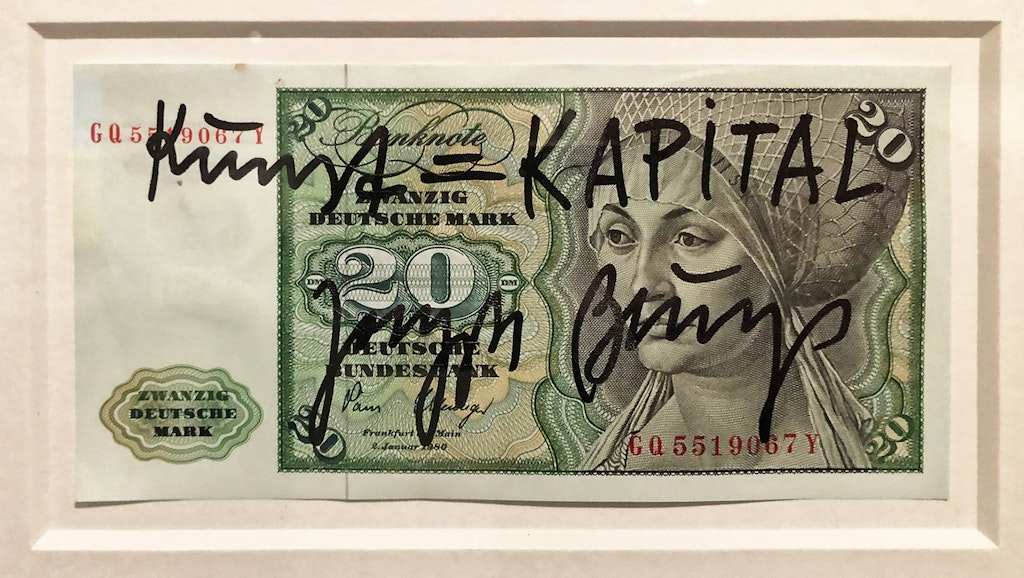Love, work and whimsy
MacDonald Gill’s poster for the Empire Marketing Board helped promote a nation at the height of its powers
This article was taken from the September issue of The Critic. To get the full magazine why not subscribe? Right now we’re offering three issue for just £5.
Macdonald “Max” Gill was once one of Britain’s highest-paid commercial artists. The unveiling of his Highways of Empire billboard poster on Charing Cross Road in 1927 caused such a sensation that it stopped the traffic. Copies of his cartographic masterpiece The Wonderground Map of London Town sold out instantly and were soon changing hands for as much as ten guineas. He was an architect, a letterer, a mural painter and a graphic designer. He was also the brother of Eric Gill, a fact that did not seem to have put the younger Gill’s nose out of joint, although his nose was actually put out of joint in a bicycling accident whilst riding pillion with Eric.
MacDonald Gill: Charting a Life certainly sets things straight and contains many such anecdotes as part of the author’s mission to re-establish the standing of an artist which for too long has been as ephemeral as his posters. Handsome and densely illustrated, this satisfying tome is the culmination of 14 years’ research into Max Gill’s life and work by his great-niece. Caroline Walker has long championed her great-uncle’s work, delivering illustrated lectures, curating exhibitions and seeking out articles from a family that numbered 13 siblings. Her primary source was a trove of memorabilia, love letters and even the artist’s baby shoes — which came to light in 2007 through the nephew of Priscilla, Max’s second wife.

Unicorn, £30
Deploying the obsessive zeal of a family historian and with a fondness for random detail, Walker has fashioned an engaging narrative to parallel this nicely illustrated visual chronology of a man who as well as being a greatly gifted artist was essentially, unlike his “kind” but somewhat “lazy” clergyman father, a workaholic. At the age of 13 Max was already winning prizes for his maps in Chums magazine competitions and bartering his artworks with schoolfriends for birds’ eggs. His projects continued unceasingly.
It was through the support of two important patrons that Gill’s work really took off: the architect Edwin Lutyens, who commissioned Gill’s first “wind-dial” map, and Frank Pick, commercial manager of the Underground Electric Railways of London, who, following the success of the Wonderground Map, regularly employed Gill as part of his campaign to visually improve the network.
Gill’s visual feats, their complexity and playful depth, still make one’s head spin
The combination of Lutyens’s Arts and Crafts aesthetic integrity, where the visual heritage of Britain was harnessed in the hands of craftsmen, and Pick’s understanding of how artists could benefit the modern commercial world, is a feature of many of Gill’s projects. Walker’s descriptions of how these projects were commissioned and executed (and the fee negotiations) will prove interesting to any graduating student of art.
Gill’s constant output allows Walker to place him as an artist working at the heart of his times. Major events are described through their intersection with Gill’s projects. In 1918 he designed the lettering that is still used on British military headstones; he drew the official procession route map for the Coronation of George VI; and his poster for the Empire Marketing Board helped promote a nation at the height of its powers. However, the Wall Street Crash saw Gill and his family facing straitened circumstances.
Walker takes great delight in pointing out the many occasions where Gill has depicted his family and their favourite jokes and activities as details in the cartographic landscape. The Gill brood can be found playing cricket on a hillside at the foot of his 1928 Country Bus Services poster. When the New Zealand ambassador pointed out that the polar bears on his Empire map were sitting on an iceberg on the wrong side of the world, Gill swiftly added the speech bubble “Why are we here? We belong in the North Pole.”
Work and whimsy might have been all we got to know of Max the man were it not for the appearance on the scene of Priscilla Johnston, his frank and sexually confident goddaughter, soon to be his mistress and eventually his wife.
Priscilla was a successful novelist but also worked with the pipe-smoking Gill on his murals Passages from her diaries detail his working methods, his devotion to his craft, and her concern that being married to him “would be like being married to a charming child”.
It’s a surprising and revealing remark that suggests the artist unravelled all his complexity in his works of art. Gill’s visual feats, their complexity and playful depth, still make one’s head spin as they evoke the spirit and values of another age.
Enjoying The Critic online? It's even better in print
Try five issues of Britain’s most civilised magazine for £10
Subscribe














